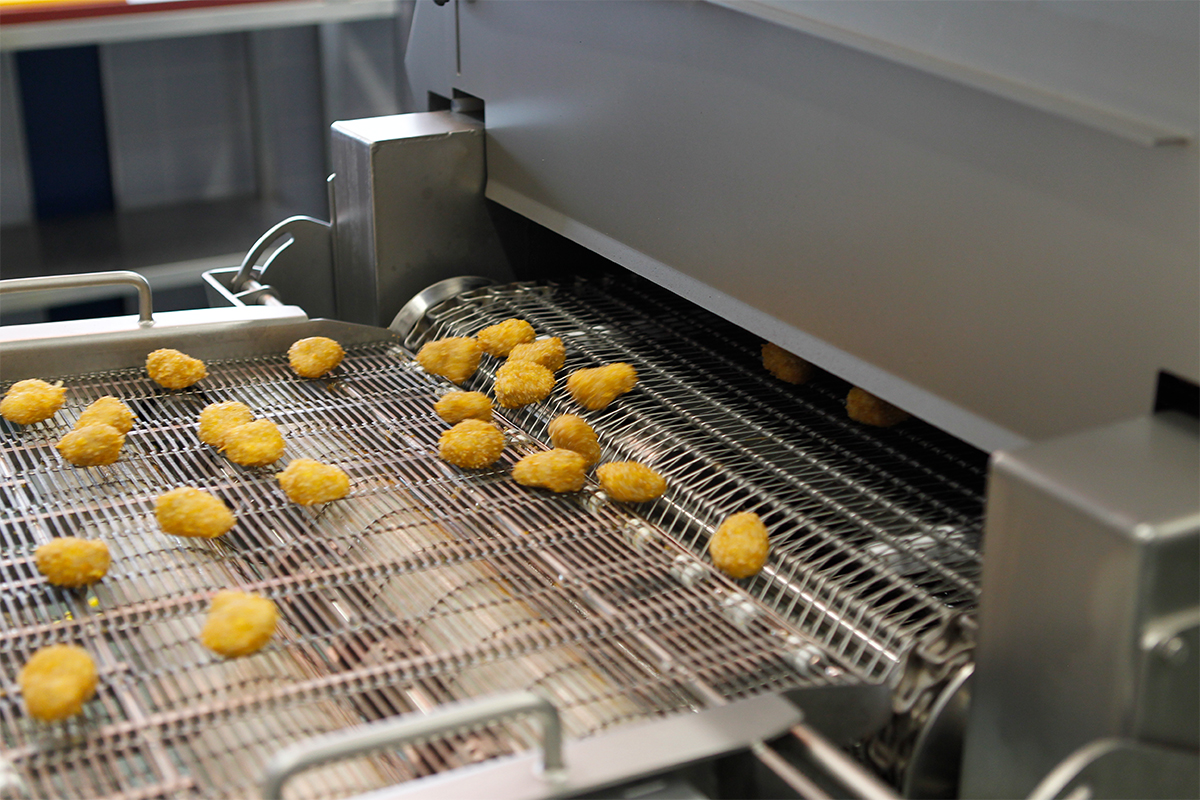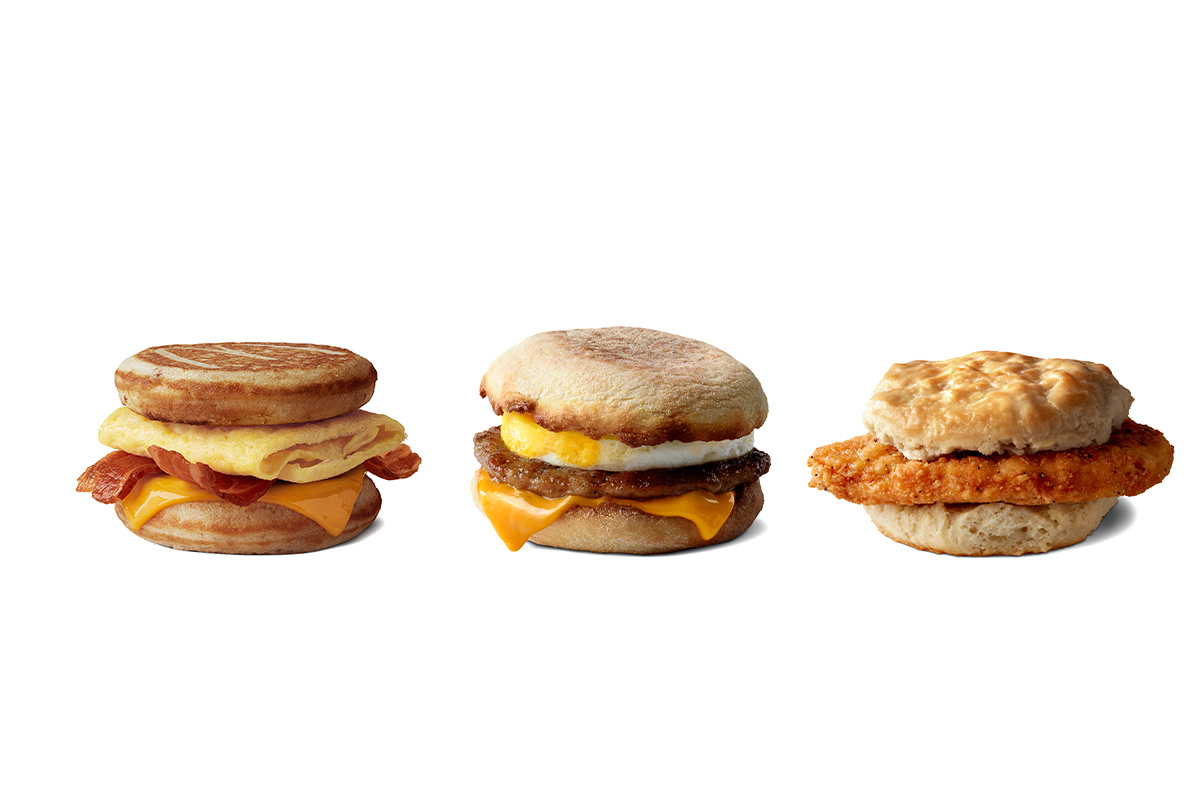New trends and changes in the quick-service restaurant (QSR) segment are playing a major role in the revamping of the foodservice segment, especially in the wake of the massive adjustments all restaurants had to make during the COVID-19 pandemic over the past three years.
According to industry stakeholders, three prominent trends include: offering as much value as possible, because value is what is most important to customers; breakfast is becoming the most important meal of the day for QSRs, thanks to heightened consumer interest; and continuous new technology is making it easier for consumers to patronize QSRs – and to increase QSR profits.
Breakfast-time is playing an increasingly important role in the success of quick-service restaurants. Breakfast eaten away from home is a growing consumer trend that QSRs are taking advantage of to play a major part in the restaurant industry.
At the same time, meat and poultry processors, who are suppliers to quick-service restaurants, needed to adjust what they do. In many cases, this has resulted in growth for these poultry and meat processors, who create products and supply other services for McDonald’s, Subway and other QSRs.
State of play
INFI, based in Chicago, helps restaurants, including quick-service restaurants, grow and improve customer ordering by supplying self-ordering kiosks and online ordering.
Company officials don’t think restaurants have gone back to their pre-pandemic status yet. Other foodservice trends in QSRs include growth of plant-based foods, including protein. Despite current setbacks in plant-based protein, they believe the plant-based market will grow over the next eight or 10 years. They also believe increased investment in delivery channels, including direct digital ordering, will bypass costly third-party partnerships.
Supply chain and food supply problems will continue due to inflation and rising food costs, so QSRs may have to reduce items on their menus to deal with these issues. “Ghost kitchen” restaurants, including some QSRs, will continue. These kitchens emphasize takeout, less on dine-in and direct customer interaction.
And the use of automation and contactless services is on the rise. During the pandemic, many restaurants, including QSRs, embraced digitization to stay in business and connect better with customers. That trend is continuing, because it reduces the need for labor, and increases profit and customer satisfaction, all at the same time.
It has become increasingly important for meat and poultry processors to take care of their customers including quick-service restaurants, said Jay Russell, key account manager for poultry with Lenexa, Kan.-based Marel. The company provides solutions, services and software to the poultry and meat processing industry.
“With the COVID-19 pandemic behind it and people eating out again, the QSR sector is once again a major player in any chicken processor’s portfolio,” Russell explained. “QSR chains have strict demands which must be met on a continuous basis. The demands center around the type and quality of the raw material to be used, as well as tightly defined weight, shape and dimensions of the products to be supplied. For QSR chains, uniformity and consistency are paramount.”
He said QSR consumers want to be sure that what they are eating is healthy and convenient. Products made from freshly portioned muscle meat are seen as being “healthier” than products made from formed meat. “This is why portioned muscle meat is so important for the QSR sector,” he said.
Russell said some QSRs ask their meat and poultry processors to add value to the supplied products, while some don’t.
“Some like to keep their recipes secret and be supplied with precisely cut versions of raw meat only. Others like their suppliers to deliver a marinated, coated, and breaded product, which only has to be heated up or fried in the restaurant. We can offer both options.”
He added that automation is becoming more important to their customers as labor challenges persist.
“Machines don’t report sick or get tired at the end of a shift. The recent COVID-19 pandemic and the shortage of labor worldwide will only have strengthened the arguments for automation.”
 For many consumers, formed meat products don't offer the same halo as whole-muscle meat offerings. (Source: Marel)
For many consumers, formed meat products don't offer the same halo as whole-muscle meat offerings. (Source: Marel)
Breakfast breakthrough
The breakfast daypart is playing an increasingly important role in the success of quick-service restaurants. More consumers are eating breakfast away from home, and QSRs are turning that trend into an advantage.
Wendy’s, in ending its fiscal third quarter at the beginning of October this year, kept its focus on three long-term efforts: building breakfast as the most important part of its day, expanding its operations across the world, and making its digital business even bigger. One step Wendy’s took in expanding breakfast was adding French toast sticks to its menu.
Todd Allan Penegor, chief executive officer at Wendy’s, noted during a call with analysts in November that the morning treat has quickly become Wendy’s top-selling breakfast item.
“The launch helped us maintain our morning meal dollar share in the QSR burger category and drove a meaningful acceleration in US breakfast sales over the course of the quarter, with average weekly sales of $3,000 as we exited quarter 3.
“This success, alongside our recently launched $3 croissant promotion, gives us confidence in reaching our goal of $3,000 average weekly breakfast sales by year-end. We remain committed to fighting for our share of the QSR breakfast business,” he said.
The Wall Street Journal reported that breakfast is the most important meal of the day for fast-food restaurants. And while breakfast belonged exclusively to the golden arches of McDonald’s, Burger King and Wendy’s, other QSR chains are competing to lure commuters with breakfast sandwiches and coffee – using smartphone apps.
“Breakfast at restaurants was adversely affected in the early stages of the pandemic, and it is recovering now that more consumers have returned to more out-of-the-home routines,” said David Portalatin, NPD food industry advisor, and author of “Eating Patterns in America.” “Breakfast is an important daypart for the US restaurant industry, and it is encouraging that consumers have found new reasons and ways to get breakfast away from home.”
The NPD Group, a global technology, analytics and data provider, found that breakfast was the most important meal of the day for the US restaurant industry based on growth of visits. Breakfast sandwiches were the top food choice of QSR breakfast offerings; 37% of all QSR breakfast orders included these sandwiches. Breakfast sandwich servings were up 4% from a year ago, and a 14% increase compared to August 2019, before the COVID-19 pandemic started.
Coffee was the top beverage ordered at QSR breakfast; 52% of all QSR breakfast orders included coffee. Coffee servings were up 11% in the month compared to a year ago, and up 2% from the pre-pandemic level.
McDonald’s still owns the morning among QSRs, grabbing 27% of customer traffic during a.m. hours, according to the foodservice consulting firm Technomic.
 Breakfast sandwiches are the top-selling menu items during the morning daypart of most QSRs. (Source: McDonald's Corp.)
Breakfast sandwiches are the top-selling menu items during the morning daypart of most QSRs. (Source: McDonald's Corp.)
Looking ahead
Quick-service restaurant traffic was up 11% last year, the National Restaurant Association (NRA) said, compared to the beginning and height of the COVID-19 pandemic in 2020. Despite many workers continuing to work from home, QSRs are well-positioned to catch consumers looking to return to pre-pandemic routines.
The NRA said that consumer spending in restaurants increased in October, even in the face of steadily rising interest rates. The association said eating and drinking places posted total sales of $89.5 billion on a seasonally adjusted basis in October, according to preliminary data from the US Census Bureau. This was up 1.6% from September’s upward revised volume of $88.1 billion – and represented the third consecutive monthly sales gain.
In its 2022 State of the Restaurant Industry Report, the NRA said that in the third year of the COVID-19 pandemic, the restaurant industry entered a “new normal” and continues to face some of the most challenging business conditions in its history, with its overall path to recovery still a struggle.
The association compares restaurant sales by segments, with QSR sales predicted to be $355 billion this year, an increase over $329 billion in 2021, $297 billion in 2020 when the pandemic hit the United States in late winter/early spring and compared to sales of $309 billion in 2019. Still QSR operators are cautiously optimistic, with 43% predicting higher sales volume by the end of this year compared to 2021, 38% about the same, and 19% lower.
McDonald’s executives are still very hopeful their business will thrive despite an economic downturn – although inflation is showing signs of relenting. Executives at McDonald’s recently said their focus on digital and delivery orders is a competitive advantage.
They are attributing this success, in part, to value, Ian F. Borden, chief financial officer, said during an earnings call at the end of October. He tied McDonald’s success to its scale and the ability to do what the company thinks it should at a lower cost than its competitors. McDonald’s is gaining share among its low-income consumers, even as the company raised menu prices by 10% over the past year. “That goes back to the fact that we are positioned as the leading brand in terms of value for money and affordability,” he said.
Borden said the company is seeing strong demand for deals and affordable menu options, as well as more premium offerings.
“There is more demand for premium value…where products aren’t at the absolute lowest price but still can be very appealing to consumers as long as the experience and the convenience is there.”
The value aspect of quick-service dining was emphasized at Yum! Brands, said David Gibbs, chief executive officer at the company, during a conference call in November with financial analysts to discuss third-quarter results.
He pointed to the return of $5 mac and cheese bowls, and a limited-edition $6 two-piece chicken meal boosted sales and transactions at KFC in the third quarter. Taco Bell benefited from a $2 cravings menu, including a bean burrito, while Pizza Hut introduced a $6.99 pizza deal and brought back its Big Dinner Box as an abundant family value offering.
And Burger King has released details of its $400 million investment plan designed to accelerate sales growth and increase franchisee profitability – two issues always on the mind of QSR chains and their franchises.
The brand’s two-year “Reclaim the Flame” plan will refresh the company’s brand through increased advertising and restaurant modernization investments, in collaboration with its franchisees.
While the QSR segment already has a full plate, there is good news on the horizon. The research and analytics company Technomic said, “On-premises dining will continue to return from its falloff during the Covid pandemic, as customers want to return to in-person eating out.”


